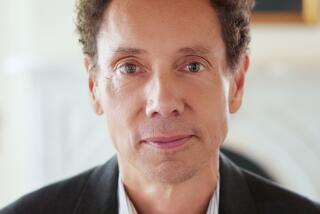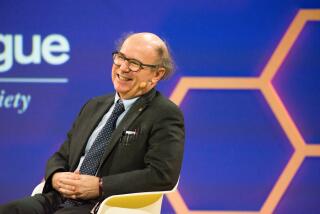The Physics of Everyday Life
- Share via
Scientists can now tell us how stars burn and how cells reproduce, but are we any closer to understanding how society works? Or is “social science” still an oxymoron?
Perhaps we should first ask whether, even if a scientific theory of society were possible, it’s something we really want. Such ideas are often floated at the scarier extremes of the left and right, where they acquire a totalitarian odor. The earliest attempt to create a “physics of society,” by Thomas Hobbes in the 17th century, is not a good advertisement. Hobbes used Galileo’s physics to argue that the best society is a monarchical dictatorship.
But there is a long tradition that associates a rationalistic social science with Enlightenment liberalism: John Locke, Immanuel Kant and John Stuart Mill shared the belief that there are “natural laws” governing society, and that these might be uncovered by systematic enquiry, just as Isaac Newton divined the laws that direct the planets.
That tradition is now back in fashion -- and this time there’s some heavy-duty science going into it. Researchers from a recondite and hitherto underpublicized discipline called statistical physics are bringing their formidable theoretical tools and computational techniques to bear on issues that seem a long way from physics: voting procedures, the waxing and waning of the economy, traffic flow and pedestrian motion, the demographics of marriage and crime, the conflict of nations.
If this seems a mite hubristic, it is important to appreciate that the modern “social physics” is not what it was in the 19th century when the French philosopher Auguste Comte coined the term. Although these early efforts -- even that of Hobbes -- were motivated by a sincere wish to make the world a better place, they displayed a deterministic tendency that subjugated or denied the role of free will.
In contrast, today’s statistical social physics embraces the idea that we are at liberty to make choices. It shows that mathematical, law-like statistical regularities can still emerge (and the data show that they do) from a mass of individuals who are free to choose.
In part, however, this reflects the often very limited range of the choices we actually employ. After all, if we are driving a car, we can, in principle, steer it anywhere at any speed, but of course we don’t. Left to our own devices, we still tend to drive on the right-hand side at a speed roughly appropriate to the context. Here and elsewhere, we are far more predictable than we like to believe. And the new physics of society reveals that our freedom is constrained not just by laws and conventions but by the effects of interactions with fellow citizens.
Traffic flow is a good illustration of these principles in action. Interactions between individuals arise here primarily because they all aim to avoid collisions. This makes us responsive to what the vehicle ahead does. The result -- distinct types of flow such as regularly spaced waves of congestion -- is relatively simple but also nonintuitive; it can’t easily be deduced from the behavior of individual drivers.
Traffic also seems to display abrupt switches in flow that bear a close similarity to “phase transitions” in physics. Such transitions -- ice melting, for example -- demonstrate that in systems of many interacting components, things often stay unchanged until some influence reaches a certain threshold that suddenly flips the system into a new mode of behavior.
Some physics-based models of the spread of crime show such jumps in the proportion of criminally active individuals when influences such as the severity of the criminal justice system are altered gradually. Sudden changes in crime rates, for example, in the “clean-up” of New York City in the mid-1990s were among the phenomena explored by Malcolm Gladwell in “The Tipping Point.” Gladwell suggested that the shifts were comparable to the spread of epidemics. But perhaps physics, rather than biology, provides the best framework for understanding them.
Social physics does tend to brush away some romantic illusions about a free society. The statistics of democratic elections, for instance, indicate that they are not simply determined by the sum of independent choices among the electorate. Instead, they show a mathematical pattern that physicists recognize as the signature of systems of strongly interacting components, which is to say that choices are not independent but highly interdependent. Our choices are influenced by many elements -- our friends and neighbors, for example -- and physicists have found that strongly interacting systems like this are prone to “avalanches,” so that even tiny influences may engender big effects. Might, say, media bias in campaigns be even more of a factor than we think?
As we uncover more of the “interaction rules” underlying social phenomena, we should be able to predict the effect of changing those rules and thus formulate public policies more likely to achieve their objectives. We might be able to design better driving regulations; more ambitiously, we might hope to gauge such things as the effects of regulations on the performance of economic markets.
That is the potential value of a physics of society: Rather than persuading us that things must be the way they are, it could show us the best way to reach a goal. Of course, science cannot tell us what that goal should be; there we must appeal to our sense of justice, equality and ethical values. That, perhaps, is the hardest part.
Philip Ball is the author of “Critical Mass: How One Thing Leads to Another” (Farrar, Straus and Giroux, 2004).






